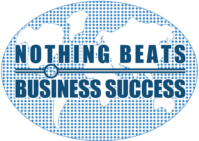“Yea, though I walk through the valley of the shadow of death, I will fear no evil: for thou art with me; thy rod and thy staff they comfort me” – Psalm 23:4
I normally write my weekly column before dawn on Friday morning to respect the publisher’s deadline. On this occasion, I used that slot to finish the preparation of my PowerPoint presentation as guest speaker at a Caribbean Disaster Emergency Response Agency (CDERA) lunch time event.
My varied and busy schedule does not allow me to operate in other that a “Just in Time” (JIT) mode, which is an industrial engineering systems approach to developing and operating a manufacturing system so that the least amount of resources (my time in this case) is expended in producing the final product (my presentation).
This was compounded by my morning walk and a bi-annual appointment with the phlebotomist to monitor my lipid profile, both prescribed by my cardiologist as integral to the efficient monitoring and controlling the health of my cardiovascular system. There was a further special event on Friday morning, that of paying respect to a younger colleague Arley Sobers who was suddenly called to higher service. We were similarly trained in mathematics and statistics but he went on to distinguish himself in the global tourism statistical arena whereas I focused on biometrics in an agricultural setting and later in operations research and management consulting leading to my present dispensation as a change-engine consultant.
To Arley’s widow Margaret, whom I know very well as the nurse in our family doctor’s medical practice, and the rest of his immediate and extended family, we extend our deepest sympathy – seek comfort in Him. My wife and I had to leave before the end of the funeral service to be able to be on time for my presentation. However, what we did hear, from the sample of tributes at the international gathering about Arley’s contribution while on earth, should go no small way in providing solace to the family for a job very well done and much appreciated.
As I arrived at the Amaryllis Beach Resort to discharge my duties as guest speaker, I was mingling with some of the invitees from the Barbados Government Information Service. They were fascinated by my billing as “change-engine consultant”, as many people are, and asked for an explanation of this appealing appellation. I facetiously responded that it was merely a marketing gimmick and the fact that they were all fascinated by it meant that I had achieved a measure of success in a least being remembered by the label.
Of course, they did not buy that so I had to go into a longer story of a visit to Ireland at the turn of the century. A management consultant was commissioned by the Irish authorities to advise on the changes required to take the railroad on a path to sustainable profitability. As I recall the story, the consultant’s report merely advised that the railway company should change the size of the locomotive engines so that they could carry more rail coaches in response to the increasing passenger and cargo demand. The consultant was then dubbed a “change engine” consultant. It was around the time when I was weaning myself away from the corporate responsibility of running a company and operating in a more individual virtual environment, and wondered what to call myself. The rest is history and hopefully I have made and will make a contribution to assist emerging enterprises on their journey to sustainable profitability.
After lunch, I duly delivered my presentation to CDERA staff and their strategic partners, including their institutional collaborators, their country counterparts, the media, information and communication specialists and public relations practitioners. I found the interactive dialogue which ensued to be extremely revealing and stimulating.
Holistic sustainable development embodies the spiritual, socio-cultural, economic and physical environments. The CDERA Comprehensive Disaster Management (CDM) strategy, to be embraced by national, regional and international stakeholders, has been acknowledged as a contributor to holistic sustainable development in particular through the reduction of human and economic losses resulting from disasters.
The question is how do we “reach the people” to share the CDM information – the proactive approach to disaster management – within various communities?
I was conscious of the fact that I was addressing an audience which included the media, information and communication specialists and public relations practitioners but pointed out that, in my experience, an “outside opinion” can often put some icing on the proverbial well made cake.
As a means of providing a communication bridge between the CDM and the target population, I suggested a media mix of nine communication channels: (1) News, Press or Media Release, (2) Press Conference, (3) Media Resource Person on Boards and Committees, (4) News Article, (5) Media Monitoring, (6) Regular Newspaper Column, (7) Public Relations Newswire, (8) Reverse Media Dialogues and (9) Caribbean Media Exchange on Sustainable Tourism and its linkages. Another channel that was added during the dialogue was Call-In Programmes and we concluded that this was only a useful CDM communication channel if there were access to CDM specialists during the audience interaction.
I concluded by asking the audience not to ignore the importance of monitoring and controlling the impact of the media through surveys, visioning retreats and town hall meetings. This is an integral part of the management process and implies taking corrective action where necessary.
